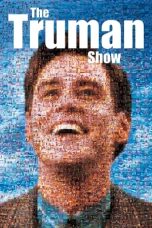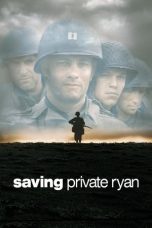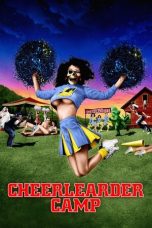- Source: KLA Summer offensive (1998)
The KLA's “Summer” offensive (Albanian: Ofensiva verore e UÇK-së, Serbian: Летња офанзива ОВК; romanized: Letnja ofanziva OVK) was a large scale offensive conducted by the KLA during the summer of 1998. It was fought in Kosovo between the Kosovo Liberation Army (KLA) against the Yugoslav Army and MUP.
It began when the KLA switched their tactics from hit and run operations to conventional warfare. KLA forces began attacking towns and expanding their territory. KLA forces had captured about 40% of Kosovo, and set up “Operational Zones”. Yugoslav soldiers and policemen were attacked, leading to many casualties.
Background
Following World War II, Kosovo was given the status of an autonomous province within the Socialist Republic of Serbia, one of six constitutional republics of the Socialist Federal Republic of Yugoslavia. After the death of Yugoslavia's long-time leader Josip Broz Tito in 1980, Yugoslavia's political system began to unravel. In 1989, Belgrade abolished self-rule in Kosovo, as well as Serbia's other autonomous province, Vojvodina, as part of Serbian President Slobodan Milošević's "anti-bureaucratic revolution". Though inhabited predominantly by ethnic Albanians, Kosovo was of great historical and cultural significance to the Serbs. Alarmed by their dwindling numbers, the province's Serbs began to fear they were being "squeezed out" by the Albanians. As soon as Kosovo's autonomy was abolished, a minority government run by Serbs and Montenegrins was appointed by Milošević to oversee the province, enforced by thousands of heavily armed paramilitaries from Serbia-proper. Albanian culture was systematically repressed and hundreds of thousands of Albanians working in state-owned companies lost their jobs.
In 1996, a group of Albanian nationalists calling themselves the Kosovo Liberation Army (KLA) began attacking the Yugoslav Army (Serbo-Croatian: Vojska Jugoslavije; VJ) and the Serbian Ministry of Internal Affairs (Serbo-Croatian: Ministarstvo unutrašnjih poslova; MUP) in Kosovo. Their goal was to separate the province from the rest of Yugoslavia, which following the separation of Slovenia, Croatia, Macedonia and Bosnia-Herzegovina in 1991–92, became a rump federation made up of Serbia and Montenegro. At first the KLA carried out hit-and-run attacks: 31 in 1996, 55 in 1997, and 66 in January and February 1998 alone. The group quickly gained popularity among young Kosovo Albanians, many of whom favoured a more aggressive approach and rejected the non-violent resistance of politician Ibrahim Rugova. The organization received a significant boost in 1997, when an armed uprising in neighbouring Albania led to thousands of weapons from the Albanian Army's depots being looted. Many of these weapons ended up in the hands of the KLA. The KLA also received substantial funds from its involvement in the drug trade. The group's popularity skyrocketed after the VJ and MUP attacked the compound of KLA leader Adem Jashari in March 1998, killing him, his closest associates and most of his extended family. The attack motivated thousands of young Kosovo Albanians to join the KLA, fueling the Kosovar uprising that eventually erupted in the spring of 1998.
Clashes in Belaćevac
In mid-June, KLA fighters were approaching the Belaćevac coal mine. Upon hearing that KLA fighters were approaching the mine, the MUP personnel stationed there fled the mine. On 22 June 1998, the KLA seized the Belaćevac coal mine near the town of Obilić. This operation by the KLA would threaten energy supplies to the region. Upon entering the mine, the militants took a number of Serb mineworkers hostage, halting production.
Backed by armoured vehicles, artillery and a number of tanks, hundreds of VJ and MUP personnel moved to recapture Belaćevac beginning on 29 June. One group of militants, including Bekim Berisha soon tactically withdrew from Belaćevac, while another barricaded itself inside the mine's management building and workshops. By 1 July, the mine was back in Yugoslav hands.
Drenica attacks
In Drenica, during August, the KLA launched a series of attacks on MUP personnel. KLA militants mined roads, booby-trapped houses, dug trenches, established checkpoints, and built bunkers. Because of the geography of the Drenica region, MUP personnel were prone to attacks by KLA militants. Hit-and-run attacks were launched by the KLA, which was deadly for MUP personnel as the KLA would slip out of the area after launching attacks,> giving MUP no time to react. Throughout August, 17 MUP policemen were killed.
References
Sources
Judah, Tim (2002). Kosovo: War and Revenge. Yale University Press. ISBN 978-0-300-09725-2.
Kata Kunci Pencarian:
- KLA Summer offensive (1998)
- Timeline of the Kosovo War
- Ilaz Kodra
- Rasim Kiçina
- Insurgency in Kosovo (1995–1998)
- Battle of Košare
- Lake Radonjić Operation
- Malush Ahmeti
- Battle of Glođane
- Fehmi Lladrovci
The Tunnel to Summer, the Exit of Goodbyes (2022)
Hotel Transylvania 3: Summer Vacation (2018)
Cheerleader Camp (1988)
Diary of a Wimpy Kid: Dog Days (2012)
No More Posts Available.
No more pages to load.














